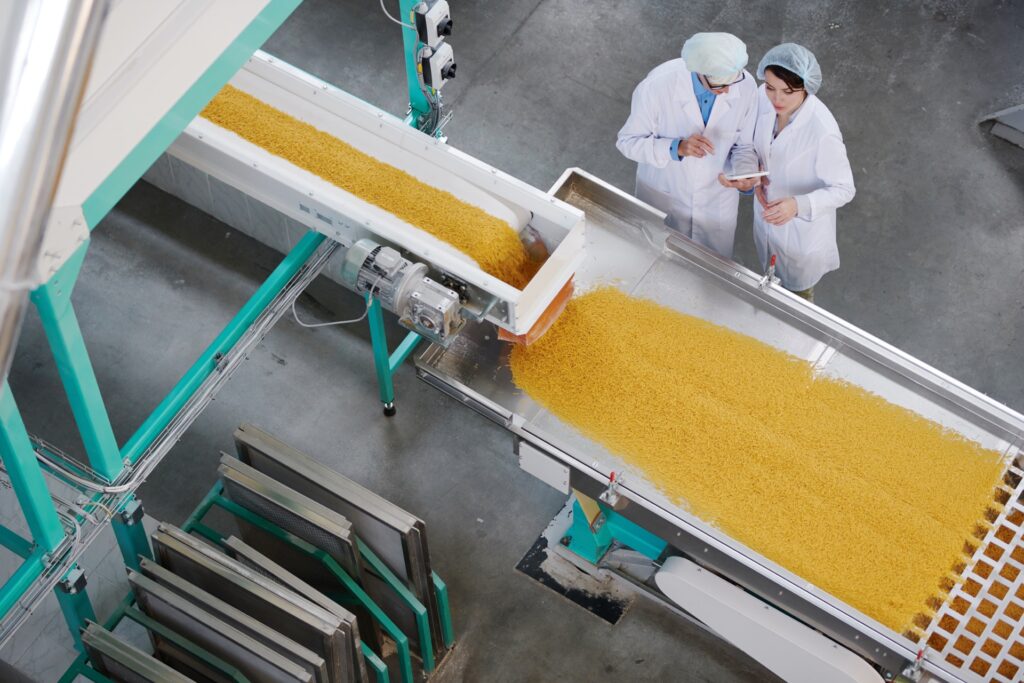SQF Edition 9 was published and launched during the SQFI Conference from October 27 to 29, 2020. Implementation is slated for May 2021.
With the new edition, SQFI aligns the SQF code with the latest GFSI benchmarking requirements. It also ensures that the standard is evolving to meet the requirements of a global food supply chain.
As a result, the SQF code for manufacturing has a new structure that is tailored to various industry sectors in an attempt to facilitate the understanding and implementation of the standard along the supply chain. This trend is reflected in an increasing number of food packaging manufacturers and food storage facilities that seek SQF certification.
Streamlined Implementation Process
New requirements for the implementation and maintenance of the SQF code, food manufacturing, will have a critical impact on certified sites, specifically small and micro-businesses.
- Code requirement 2.1.1.4 and 2.1.1.5 now stipulate that “senior site management shall designate a substitute SQF practitioner.” While the site’s SQF system was always expected to be well-staffed and resourced, the code now makes it clear that the SQF practitioner should have a competent backup. The credentials and responsibilities for the SQF alternate remain the same.
- The 2-step certification audit process has changed with the removal of the desk audit. SQF auditors will now complete one combined SQF desk and facility audit during the certification audit stage. Sites who wish to validate the adequacy of the written program may seek consulting services independently of the audit process, through the assistance, for instance, of a certified SQF consultant.
- The audit scoring system has also been revised. Major non-conformities identified during the certification or recertification audit will now cost the site 5 points instead of 10 points. This change will encourage SQF auditors to raise major non-conformities and will provide SQFI and SQF professionals with more insight regarding the categorization of audit findings.
These changes should force sites to make a commitment to food safety and be well prepared for the certification audit. These changes render the code more robust but also more difficult to implement for small and very small sites.
 More detailed SQF Code Requirements
More detailed SQF Code Requirements
The system elements and Module 11 (food manufacturing) do not present drastic changes. The code has been streamlined to remove redundancy so that the written program may be more easily developed. This has resulted in changes in the numbering of the clauses. Sites should therefore perform a gap assessment to ensure that their written program reference the right code elements.
Amongst the main changes is the need to integrate a new GFSI benchmarking requirement, “the food safety culture”. Under 2.1.1 Management Responsibility, senior site management must “establish and maintain a food safety culture within the site”. Furthermore,
2.1.1.2 Senior site management shall lead and support a food safety culture within the site that ensures at a minimum:
i. The establishment, documentation, and communication to all relevant staff of food safety objectives and performance measures;
ii. Adequate resources are available to meet food safety objectives;
iii. Food safety practices and all applicable requirements of the SQF System are adopted and maintained;
iv. Employees are informed and held accountable for their food safety and regulatory responsibilities;
v. Employees are positively encouraged and required to notify management about actual or potential food safety issues; and
vi. Employees are empowered to act to resolve food safety issues within their scope of work.
During the SQF conference, SQFI organized a webinar to discuss interpretation and implementation of the new requirement. The advice that was given was for sites to create a food safety culture plan which would be reviewed as part of objectives during the annual management review. The presenter stressed that developing a food safety culture within the site is a journey that requires commitment and active participation on the part of senior management. If you are looking at resources to develop your food safety culture plan, you may review the following links:
- SQF Code Edition 9 Webinars
- SQFI Where to Begin with Developing Your Food Safety Culture
- GFSI A culture of Food Safety
Outside of the new food safety culture requirement, the code has been streamlined to make it more user-friendly and in line with Good Manufacturing Practices. For instance, “Stock rotation” and “Non-Conforming Equipment” requirements have been moved to Module 11. In addition, some elements and sub-elements have been expanded to provide more detailed descriptions of what is expected at the sites. For example, the Corrective and Preventative Action element now references “deviations from food safety requirements [which] may include customer complaints, nonconformances raised at internal or external audits and inspections, non-conforming product and equipment, withdrawals and recalls, as appropriate.” Edition 9 also identifies “Preventive Action.” Requirements as part of CAPA. Under “2.5.4 Internal audits,” another bullet point has been added: “ii. Objective evidence is recorded to verify compliance and/or non-compliance.”
Furthermore and under sub-element 2.6.1.2 Product start-up, product changeover, and packaging changeover (including label changes), “product changeover and label reconciliation records shall be maintained.”
Drinking water supply requirements (11.5.1) now specify water treatment processes more clearly and their corresponding testing requirements. There are also additional risk assessments that must be conducted. A list of all risk analyses is provided here:
- 2.4.2.1 The site shall ensure the applicable Good Manufacturing Practices described in Module 11 of this Food Safety Code are applied or exempted according to a written risk analysis outlining the justification for exemption or evidence of the effectiveness of alternative control measures that ensure food safety is not compromised.
- 2.8.1.1 A risk analysis of those raw materials, ingredients, and processing aids, including food grade lubricants, that contain food allergens.
- 11.1.2.5 Ducting, conduit, and pipes that convey ingredients, products, or services, such as steam or water, shall be designed and constructed to prevent the contamination of food, ingredients, and food contact surfaces and allow ease of cleaning. A risk analysis shall be conducted to ensure food contamination risks are mitigated.
- 11.1.2.6 Pipes carrying sanitary waste or wastewater that are located directly over product lines or storage areas shall be designed and constructed to prevent the contamination of food, materials, ingredients, and food contact surfaces and shall allow ease of cleaning. A risk analysis shall be conducted to ensure food contamination risks are mitigated.
- 11.3.3.1 The site shall undertake a risk analysis to ensure that the clothing and hair policy protects materials, food, and food contact surfaces from unintentional microbiological or physical contamination.
- 11.6.1.5 Where raw materials, ingredients, packaging, equipment, and chemicals are held under temporary or overflow conditions that are not designed for the safe storage of goods, a risk analysis shall be undertaken to ensure there are no risks to the integrity of those goods, no potential for contamination or adverse effect on food safety.
A more detailed list of changes can be accessed through the SQFI website at this link.
With the need to designate and train 2 SQF practitioners, SQF Edition 9.0 raises the bar for small and very small businesses that will need to commit to food safety to meet their growth and customer requirements. Meanwhile, the food industry at large is rapidly evolving and adopting technological advances to meet regulatory and consumer requirements.
_____________________________________________________________________________________
Sirocco Consulting provides assistance to small and medium-size businesses in Canada and the United States. Our company provides training and system implementation solutions. Our SQF Bundle Edition 9 is now ready for purchase and download. Our course line up for early 2021 can be found here.

